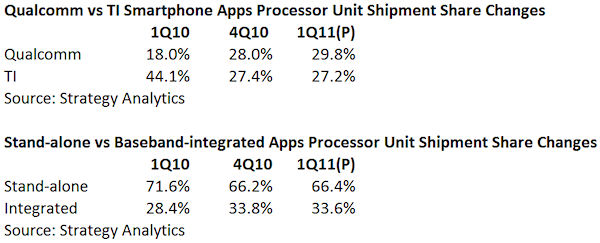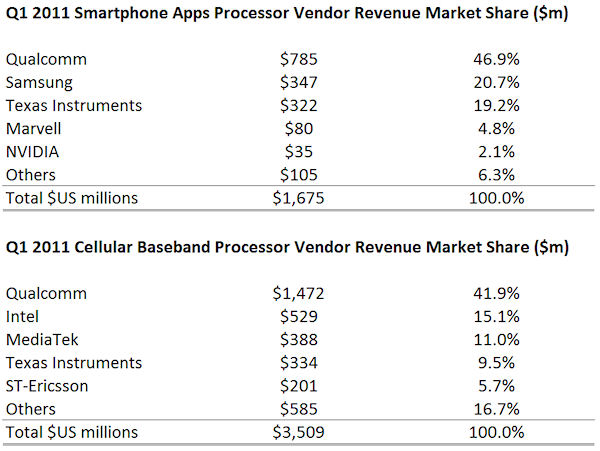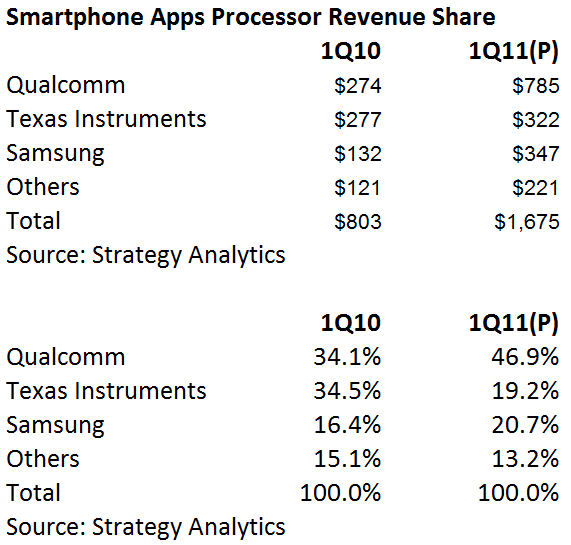Year of the dragon
Some new figures from market researcher Strategy Analytics reveal the extent to which Qualcomm has capitalised on the smartphone revolution, mainly to the detriment of Texas Instruments (TI).
Back in Q1 2010, Qualcomm had an 18 percent share of the smartphone applications processor market by shipments, while TI had 44.1 percent. A year later Qualcomm has overtaken TI in terms of volume and is way ahead of the pack in terms of revenue.
We spoke to the author of the Strategy Analytics report, Sravan Kundojjala, to find out why Qualcomm has done so well. "Stand-alone applications processor shipments accounted for 33.6 percent of total applications processor shipments [in Q1 2011], up from 28.4 percent in Q1 2010," said Kundojjala.
"From almost negligible unit shipment share in 2007, Qualcomm snatched the number one position from TI. Qualcomm's unit shipment share increased from just 3 percent in 2007 to about 30 percent in Q1 2011, thanks primarily to Qualcomm's strong participation in the Android ecosystem."
Kundojjala revealed that Qualcomm has a 61 percent volume share of the Android application processor market, with the likes of HTC and Sony Ericsson almost exclusive. He also revealed that TI has been historically reliant on Nokia for much of its application processor business, so it's clear to see where its decline in that market has come from. And with Nokia set to switch to WP7, which is currently Qualcomm-only, things don't look like getting better for TI in a hurry.
Qualcomm is also the run-away leader in the baseband processor market, and another reason for its success may be a trend towards OEMs buying baseband-integrated application processors.
The relevant data is summarized in the tables from Strategy Analytics below. A couple of important details need to be clarified. Firstly the Figures for Samsung include the Apple A4, which Samsung currently manufactures. Secondly, the reason the baseband processor market is so much bigger is that it covers all devices, not just smartphones. Note also how the smartphone application processor market has doubled in the past year.
















